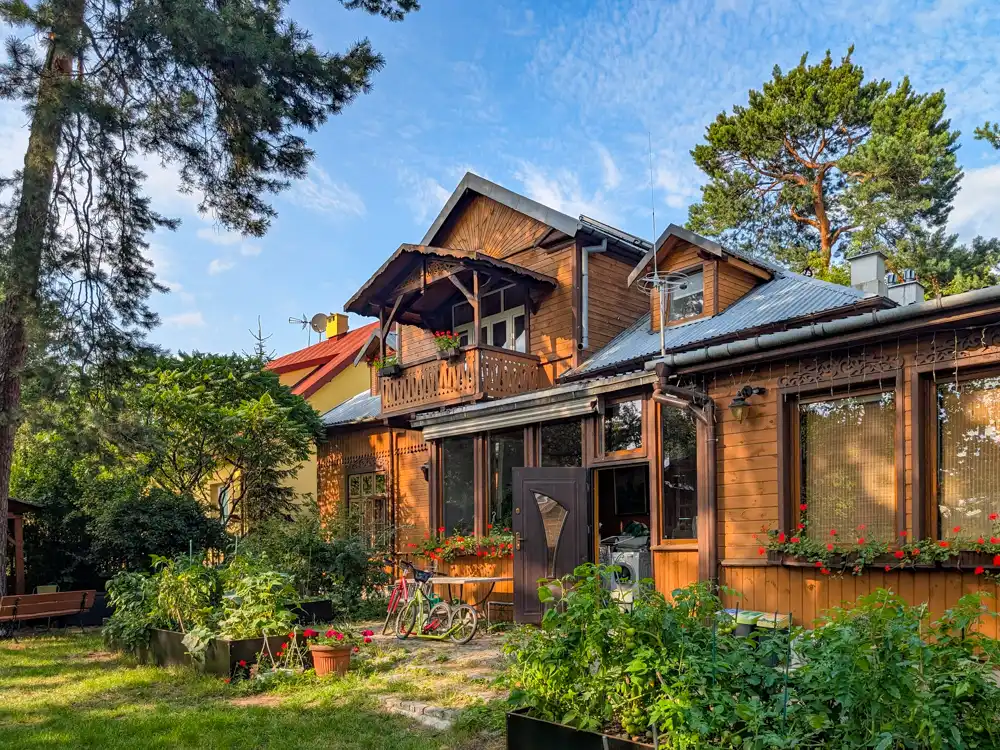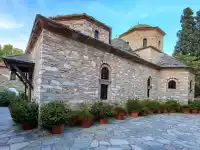When Otwock first popped up on Airbnb as an option for accommodation near Warsaw, I was cautious. The listing promised exceptional comfort for a great price — but I worried about transportation into the city. After all, two slightly crazy seniors, traveling by train and folding scooters, living 24 kilometers outside Warsaw’s center, didn’t sound like the most practical setup.
In the end, Google and the irresistible price won. Fortunately. Photos of the accommodation (which many hosts still underestimate as a sales point) and the nearby Mazowiecki Landscape Park sealed the deal.
Between Otwock and Warsaw
The story of how we learned our first Polish phrases and arrived in Otwock deserves its own tale. But let me at least say this: transportation between Otwock and Warsaw is better than excellent. Every 30 minutes a fast train runs to the city, and what’s more, Warsaw’s standard day tickets cover it. For less than €12 we bought 72-hour tickets valid for metro, trains, buses, trams — even the fast trains. With the two-zone version, everything within 30 km, including Otwock, is yours.
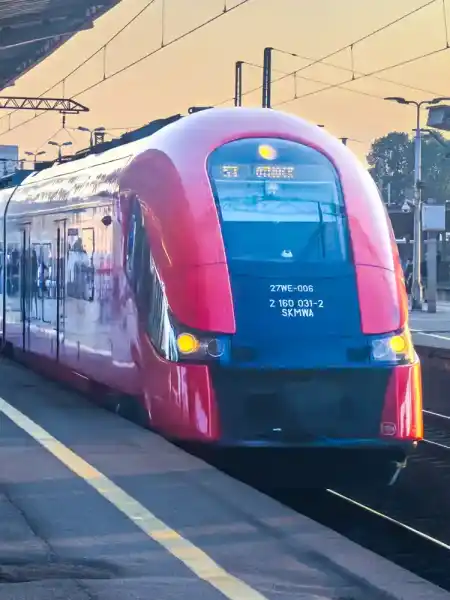
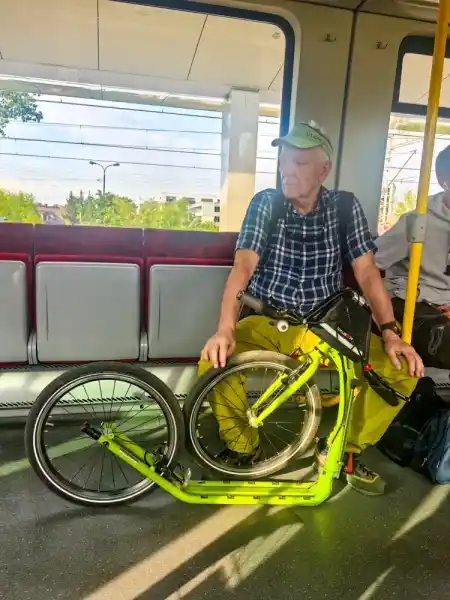
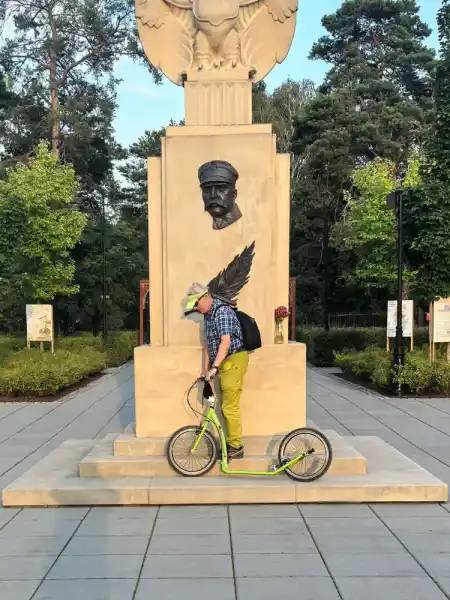
Scooter and Train
Being seasoned travelers with folding Kostka footbikes (not exactly the smallest ones), we worried a little about how to carry them on the train. At first, we folded them neatly. Later, we realized it wasn’t necessary — conductors didn’t care at all about bikes or scooters. Great news: Warsaw is a city we’ll return to. 🙂
Evening Garden Conversations
From the first evening we clicked with our hosts, Mrs. Małgorzata and her husband. Our “warm-up” began in their garden — we offered Czech Pilsner, they treated us to a Polish specialty. That’s when we first learned about the house we were staying in.
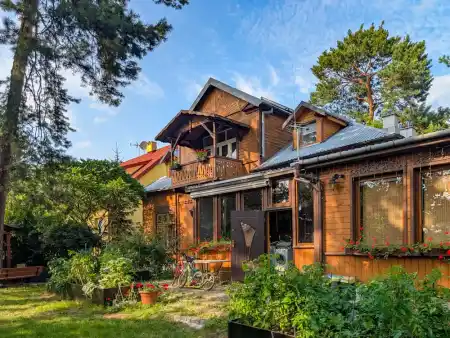
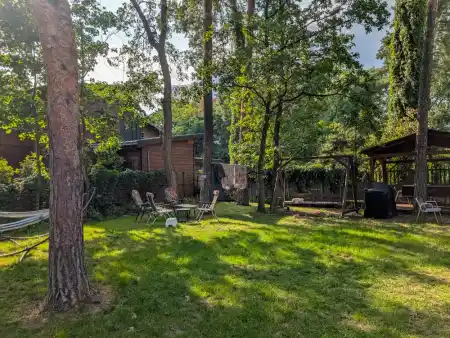
Their home, with its distinct architectural features, was a fine example of Świdermajer style. So we asked Małgorzata: what exactly is Świdermajer?
Świdermajer
The Świdermajer style emerged at the turn of the 19th and 20th centuries around Otwock. The name is a playful combination of the Świder River and the German word Biedermeier. Its creator is considered to be Michał Elwiro Andriolli, a Polish artist and illustrator, who designed the first villas in this region. Unfortunately, few have survived.
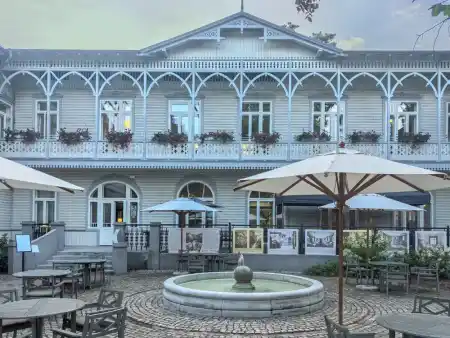

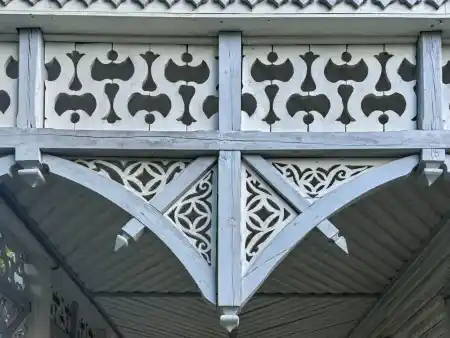
This wooden architecture is marked by decorative carvings, verandas, and balconies. Think spacious terraces, big windows, and intricate ornaments. It’s a blend of Polish folk traditions with Russian and Swiss influences. Many of the villas disappeared after the war or fell into disrepair, but recently there’s been a revival — people are renovating and saving the remaining gems. And yes, we were sitting in the garden of one of them.
Originally, these villas were built as summer homes for wealthy Varsovians escaping the city.
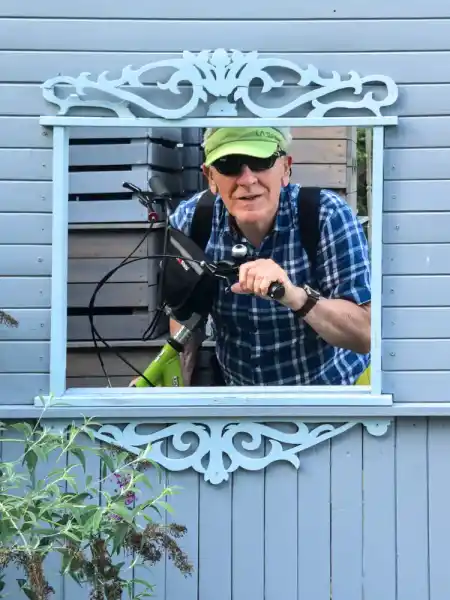
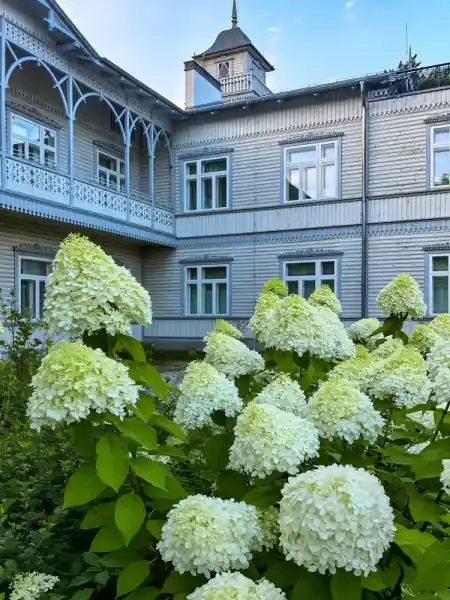
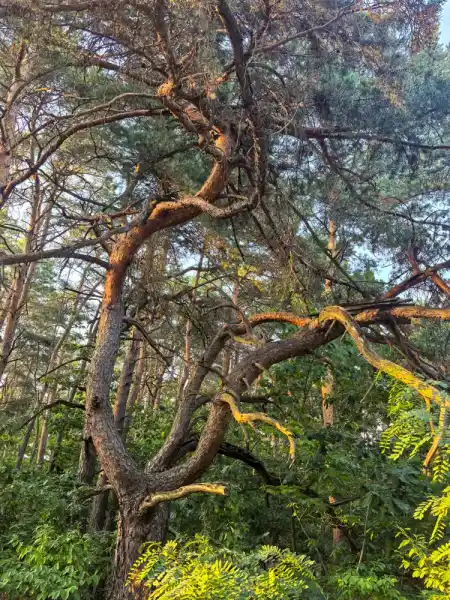
Spa Town Otwock
Back in the day, Otwock was Warsaw’s spa town. The popularity of Świdermajer architecture grew alongside the healthy climate of the region, famous for pine forests and clean, dry air.
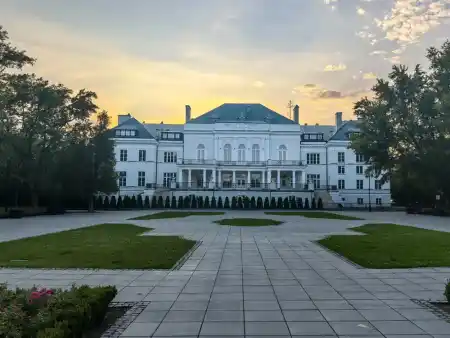
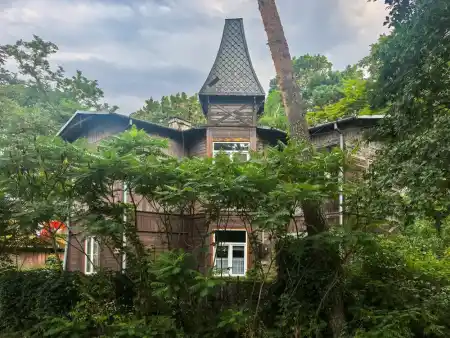
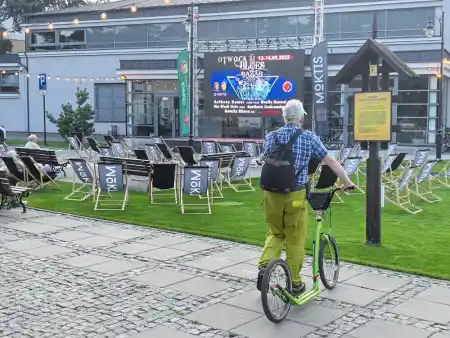
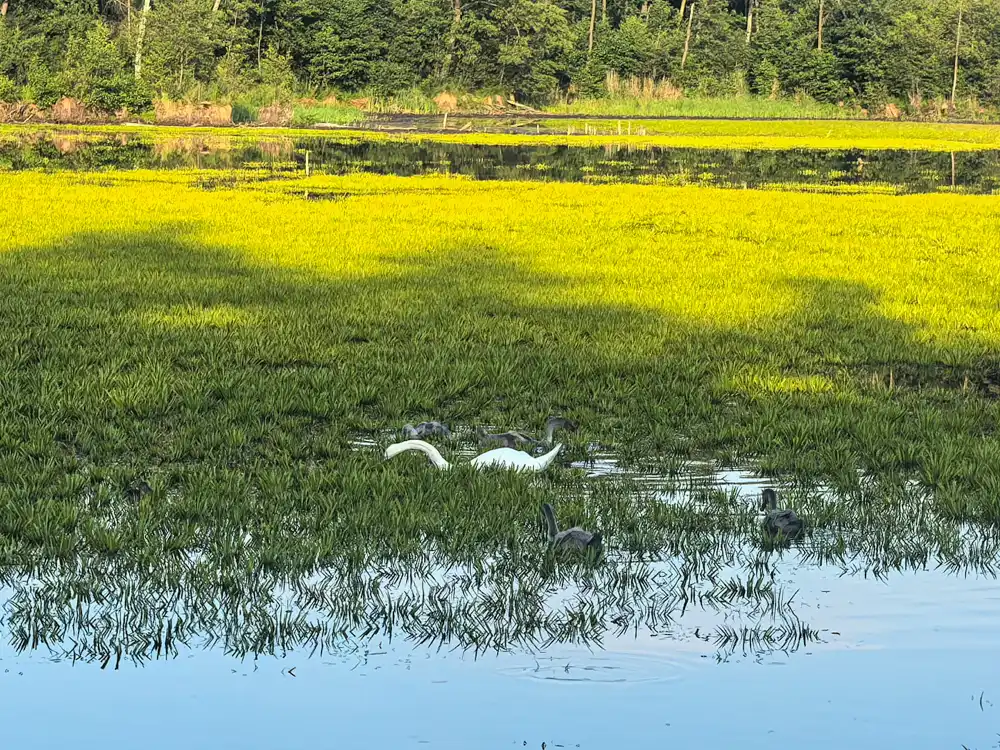
Before WWII, there were eight sanatoriums here for tuberculosis, lung diseases, and nervous conditions. War changed everything: many were destroyed, repurposed, or abandoned. With the arrival of modern medicine, the spa tradition faded.
What remains today is still special: a town submerged in greenery, silence, and pine-scented air. Perfect for scooters.
Mazowiecki Landscape Park
Almost 16,000 hectares of forest and meadow trails begin right at Otwock’s edge — like a flat, Polish version of Šumava. Woods, meadows, peat bogs, marshes. It was clear we had to spend our very first evening here.
Torfy Peat Lake
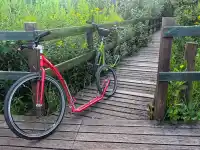
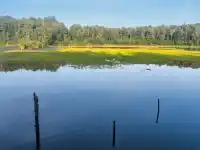
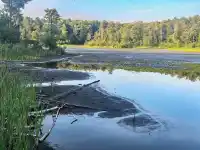

We made a trip to Torfy Lake, which is special because it’s artificial — created after peat extraction. Today it’s an oasis of wetlands, acid soil, water plants, swans, and croaking creatures. The ride there turned out to be one of the most beautiful scooter trails in Poland. Allegedly, carnivorous sundew plants grow here — we didn’t find them, though.
Military Bunkers
About three kilometers beyond the lake we came across several old military bunkers. Most date back to the pre-WWII era and were part of Warsaw’s defensive line. Some are now small museums or tourist curiosities. For us, with recent years already saturated with military themes, a quick look was enough.
Discover Warsaw — stay in Otwock
Our Experience in One Line


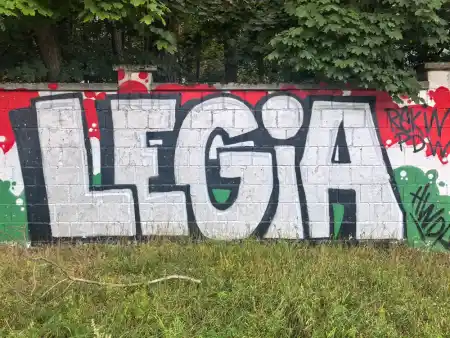
Spend your day in the city’s attractions, return in the evening to quiet, beer in hand, under pines, in a wooden Świdermajer villa. As a bonus, there will be a rock concert in the park or an open-air movie screening in the evening. Honestly, the best choice we could have made.
Extra Day Trip Tips around Warsaw
- Konstancin-Jeziorna – another spa town, 20 km from Warsaw, with a salt cave and healing springs.
- Kampinos National Park – dunes, forests, wetlands, and even European bison. Great for hiking, cycling, or scooters.
- Żelazowa Wola – birthplace of Fryderyk Chopin. A park, museum, and classical music concerts.
- Modlin Fortress – one of the largest fortifications in Poland, built in the 19th century.
- Góra Kalwaria – a small historical town with Jewish heritage and baroque churches.
- Zalew Zegrzyński – a big reservoir north of Warsaw, perfect for water sports and summer recreation.
- Puszcza Kampinoska – endless sandy trails and wetlands, great for long hikes or bike rides.
And yes, there’s always a Biedronka supermarket nearby — selling Czech Pilsner cheaper than in Bratislava.
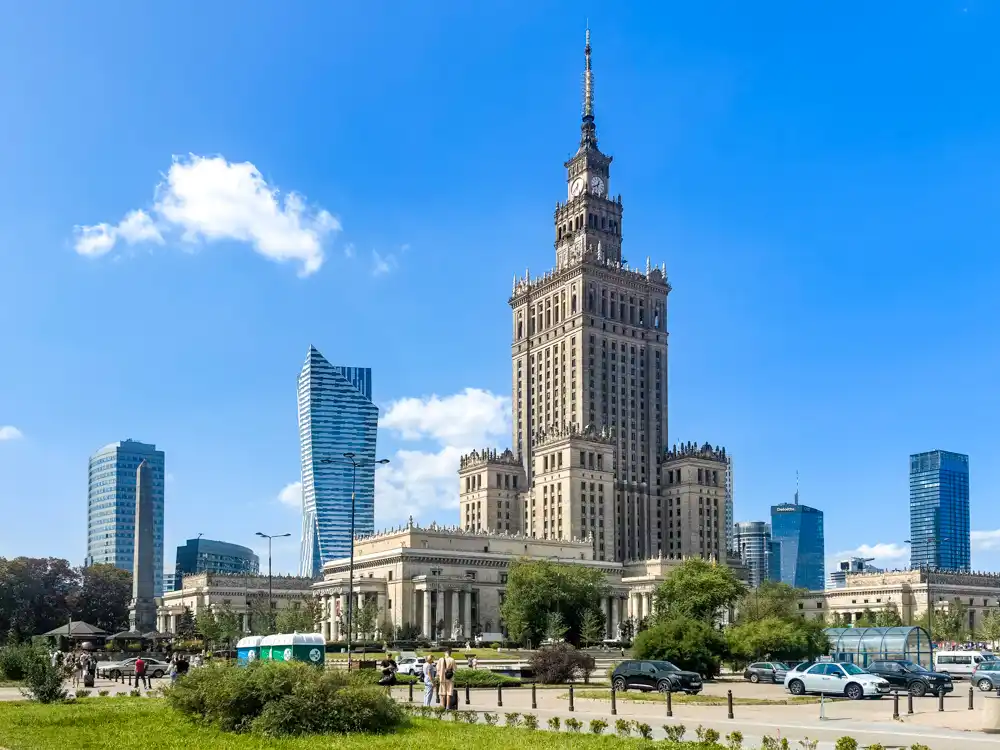
👉 Warsaw is much more than the Palace of Culture, Vistula banks, Praga or the Old Town. With Otwock as your base, you can explore the capital and escape it at the same time.

